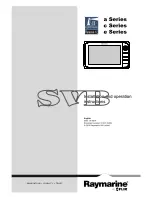Summary of Contents for HI 901
Page 2: ......
Page 6: ...1 2 INTRODUCTION ...
Page 8: ...2 2 SETUP ...
Page 18: ...2 12 SETUP ...
Page 20: ...3 2 USER INTERFACE ...
Page 28: ...4 2 GENERAL OPTIONS ...
Page 86: ...6 2 TITRATION MODE ...
Page 90: ...6 6 TITRATION MODE ...
Page 92: ...7 2 pH mV MODE ...
Page 100: ...7 10 pH mV MODE ...
Page 102: ...8 2 AUXILIARY FUNCTIONS ...
Page 110: ...8 10 AUXILIARY FUNCTIONS ...
Page 112: ...9 2 MAINTENANCE PERIPHERALS ...
Page 123: ...A1 1 APPENDIX 1 Appendix 1 Contents A1 TECHNICAL SPECIFICATIONS A1 3 ...
Page 124: ...A1 2 APPENDIX 1 ...
Page 128: ...A2 2 APPENDIX 2 ...
Page 134: ...A3 2 APPENDIX 3 ...
Page 138: ...A3 6 APPENDIX 3 ...
Page 140: ...A4 2 APPENDIX 4 ...



































